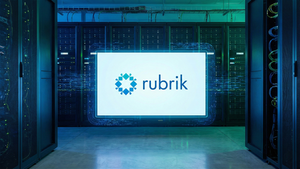
The technology sector has once again proven its resilience and transformative power through the Q2 and Q3 2025 earnings seasons, with Artificial Intelligence (AI) emerging as the undeniable driving force behind robust financial performances and soaring investor sentiment. As the global economy continues to find its footing, tech giants have largely exceeded expectations, propelling major indices to record highs and solidifying the narrative of an AI-powered future. However, beneath the surface of widespread optimism, a nuanced picture emerges, revealing a widening gap between companies that are successfully leveraging AI and those still seeking their footing in this rapidly evolving landscape.
This period has been characterized by an insatiable investor appetite for AI, leading to substantial capital expenditure increases among the "Magnificent Seven" tech behemoths. While the enthusiasm is palpable, discussions around potential market overheating and the sustainability of rapid growth have also gained traction, prompting a closer look at the underlying fundamentals and long-term implications of this AI-driven surge.
AI's Unprecedented Impact: A Deep Dive into Tech's Performance
The Q2 and Q3 2025 earnings seasons were dominated by the profound impact of AI, which reshaped credit markets, commerce platforms, and customer interactions across the board. The technology and communication services sectors, in particular, exhibited unusually high year-over-year revenue growth rates, significantly contributing to the S&P 500's blended earnings growth of around 11.9% in Q2 2025. This marked the third consecutive quarter of double-digit gains for the index, driven heavily by AI-related infrastructure and services.
Companies deeply entrenched in providing AI infrastructure and solutions, especially those focused on generative AI and large language models (LLMs), reported stellar results. The demand for advanced processing power proved insatiable, leading to record sales for chipmakers and significant revenue boosts for cloud service providers. This period saw major tech players committing staggering amounts to AI infrastructure, with figures like Microsoft's (NASDAQ: MSFT) $80 billion global investment for fiscal year 2025 underscoring the strategic imperative of AI dominance. The market's reaction to these reports was largely positive, with stock prices reflecting the high expectations and strong performance, though some concerns about already lofty valuations occasionally tempered initial gains.
The AI Divide: Winners and Those Facing Challenges
The Q2/Q3 2025 period clearly delineated the winners and those facing significant headwinds within the tech sector, primarily based on their AI strategies and market positioning.
NVIDIA (NASDAQ: NVDA) unequivocally solidified its position as a leading "winner." The company's indispensable role in the AI infrastructure build-out led to record revenue in Q3 Fiscal 2025 (ended October 27, 2024) of $35.1 billion, a 94% increase year-over-year, with Data Center revenue hitting $30.8 billion, up 112%. This momentum continued into Q2 Fiscal 2026 (ended July 27, 2025), with revenue reaching $46.7 billion, up 56% year-over-year. CEO Jensen Huang emphasized the "age of AI is in full steam," driving incredible demand for its Hopper and anticipated Blackwell platforms. Investor sentiment remained highly bullish, with NVIDIA's stock performance consistently reflecting its strong earnings beats and robust guidance.
Microsoft (NASDAQ: MSFT) also emerged as a clear winner, leveraging its cloud dominance and aggressive AI integration. Its "Intelligent Cloud" segment, particularly Azure, was a significant growth driver, with AI services contributing 16 percentage points to Azure's growth in Q2 2025. The company's enterprise AI tools like Copilot are deepening customer lock-in across its vast ecosystem. Microsoft's Q2 and Q3 2025 earnings consistently surpassed Wall Street expectations, with revenue growing 13% year-over-year to $70.1 billion in Q3 2025 and net income increasing 18%, leading to broad investor optimism.
Meta Platforms (NASDAQ: META) experienced a remarkable turnaround, with its aggressive AI investments paying off in core advertising. Meta's Q2 2025 results "shattered expectations," driven by the successful integration of AI into its advertising business. The company reported a strong beat on revenue ($47.52 billion) and EPS ($7.14), with its stock surging over 10% post-announcement. Meta AI, built on models like Llama 4, reached 400 million monthly active users by Q2 2025, and generative AI tools for advertisers fueled revenue growth.
Alphabet (NASDAQ: GOOGL), the parent company of Google, showcased robust cloud growth and strategic AI integration. Its Q2 2025 earnings topped estimates, with revenue rising 13.8% year-over-year to $96.43 billion. Google Cloud was a standout, with revenue increasing 32% year-over-year, driven by demand for AI and enterprise solutions. The company's "full-stack" AI approach, from TPUs to Gemini 2.5 models, instilled investor confidence despite high AI spending.
On the other hand, Apple (NASDAQ: AAPL) faced mixed investor sentiment despite strong overall financial results. While Apple's Q3 2025 earnings were robust, beating expectations with revenue of $94.04 billion (up 10% year-over-year), initial skepticism about its AI strategy lingered. CEO Tim Cook announced a "decisive shift" in Q3 2025 towards positioning AI as a core growth lever, but the company's projected AI capital expenditure of $9.5 billion for 2025 was significantly lower than rivals, contributing to a perception of playing catch-up in the AI race.
Tesla (NASDAQ: TSLA) struggled with declining core automotive sales and heightened competition, overshadowing its ambitious AI and robotics initiatives. Tesla was generally considered a "loser" in investor sentiment for Q2 2025, reporting a 12% year-over-year decrease in revenue to $22.5 billion and a 16% drop in net income. While Q3 2025 revenue saw a surge to $29 billion, driven by the energy segment and Cybertruck demand, the automotive division continued to face pricing pressures. Investor sentiment was split, with some analysts viewing the stock as "increasingly disconnected from fundamentals" despite the long-term potential of its AI efforts like the Roboaxi pilot program.
Industry Impact and Broader Implications: A New Era of Computing
The Q2/Q3 2025 performance signals more than just a strong earnings season; it marks a critical shift from AI experimentation to widespread operational implementation, fundamentally reshaping industry dynamics. The tech sector is projected for robust growth in 2025, with global IT spending anticipated to increase by 9.3%, and AI spending forecast to grow at a compound annual growth rate of 29% from 2024 to 2028. This period is characterized by a strategic pivot towards "efficient growth," with businesses prioritizing strategic investments, largely fueled by AI.
AI is acting as a foundational amplifier for numerous other technological advancements. The insatiable demand for processing power, especially for generative AI and LLMs, is driving massive capital expenditures in advanced semiconductors and expansive cloud computing infrastructure. Hyperscalers significantly accelerated their spending, with global capital expenditures on data center infrastructure alone projected to exceed $1.7 trillion by 2030. This boom creates immense ripple effects, benefiting semiconductor and hardware companies like NVIDIA (NASDAQ: NVDA) and ASML Holding N.V. (NASDAQ: ASML), while intensifying competition among cloud providers such as Amazon Web Services (NASDAQ: AMZN), Azure (NASDAQ: MSFT), and Google Cloud (NASDAQ: GOOGL).
The emergence of "Agentic AI," capable of autonomous planning and execution of multi-step workflows, is rapidly gaining traction, promising "virtual coworkers." This trend, alongside the growing investment in custom silicon and edge computing, is poised to redefine human-machine collaboration, shifting the focus from human replacement to augmentation. However, this transformative period is not without its challenges. Escalating cyber threats, amplified by IoT, generative AI, and cloud computing, make cybersecurity a paramount concern.
Regulatory bodies globally are also racing to keep pace. The EU AI Act, adopted in 2024, exemplifies a risk-based approach, and other regions are developing similar frameworks. Data privacy, ethics, transparency, fairness, and accountability in AI models are becoming critical mandates. Geopolitical competition for AI leadership is intensifying, with nations doubling down on sovereign infrastructure and localized chip fabrication. While many draw parallels to historical tech booms like the dot-com bubble, cautioning against speculative bubbles, the consensus remains that AI, like the internet, has immense long-term transformative potential, laying the groundwork for future breakthroughs despite potential short-term volatility.
What Comes Next: Navigating the AI Frontier
The tech sector's trajectory post-Q2/Q3 2025 is overwhelmingly positive, driven by AI's sustained impact, yet it necessitates strategic adaptation and careful navigation of emerging opportunities and challenges. Short-term possibilities include the continued dominance of AI infrastructure providers, expanding into AI-driven software and applications, and increased enterprise adoption of AI for efficiency and innovation. Companies are prioritizing AI monetization, translating vast infrastructure investments into sustainable revenue streams. The rapid emergence of Agentic AI is set to transform industries by enabling autonomous decision-making and multi-step workflow execution.
Long-term, AI's impact is expected to deepen, leading to hyper-personalization across e-commerce and education, and potentially enabling emotionally aware AI for various applications. It promises transformative productivity gains, automating significant portions of work activities and creating new business models. However, realizing this potential requires continuous investment in AI infrastructure and talent, an "AI-first" strategic pivot, and a strong focus on responsible AI and governance. Companies must foster continuous innovation, engage in strategic partnerships, and redesign processes to integrate AI effectively.
Emerging markets present a unique duality of opportunities and challenges. AI can accelerate economic and social progress, enable tailored solutions for local needs, and foster job creation in specialized fields. Yet, infrastructural deficiencies, skill gaps, regulatory uncertainties, cultural resistance, and the potential for AI to exacerbate the digital divide remain significant hurdles.
Various scenarios could unfold: a "Utopian/Promising Future" where AI leads to widespread scientific breakthroughs and societal welfare; a "Stagnation/Constrained Growth Scenario" where geopolitical uncertainty, inflation, and infrastructure constraints temper AI's transformative impact; an "Unevenly Distributed Future" where AI's gains and losses are concentrated, widening existing gaps; or a "Challenging/Skeptical Future" plagued by AI unreliability, ethical concerns, and amplified cybersecurity threats. The path taken will largely depend on companies' abilities to adapt strategically, address ethical considerations, and overcome infrastructural and talent challenges globally.
Conclusion: AI's Enduring Legacy and the Investor's Compass
The Q2 and Q3 2025 earnings seasons have firmly established AI as the primary growth engine for the technology sector, driving unprecedented financial performance and solidifying its role as a foundational element of technological and economic expansion. The "Magnificent Seven" tech giants, particularly those heavily invested in AI infrastructure and solutions, delivered remarkable results, largely exceeding market expectations and propelling major indices to new highs. This period underscores a crucial shift: AI is no longer an experimental technology but an integrated, pervasive force transforming business operations, enhancing productivity, and creating new revenue streams across industries.
The lasting impact of AI is profound and multifaceted. It's creating entirely new paradigms in demand for advanced semiconductors and cloud computing infrastructure, necessitating colossal capital expenditures and reshaping supply chains. While AI promises significant efficiency gains and new specialized job roles, it also introduces complex ethical dilemmas, privacy concerns, and potential job displacement in routine tasks, demanding thoughtful approaches to safety, governance, and workforce adaptation.
For investors, the coming months (Q4 2025 and beyond) will be critical. Key areas to watch include the sustainability of AI-driven growth and whether companies can translate massive capital expenditures into tangible, long-term returns. Scrutiny will be on the continued outperformance of the "Magnificent Seven" and whether their growth rates converge with other sectors. Investors must differentiate between companies exhibiting genuine AI-driven profitability and those riding speculative exuberance. Broader economic signals, including consumer health, capital spending, tariffs, and interest rate policies, will continue to play a crucial role. Furthermore, monitoring innovation in generative AI and autonomous AI agents, the growth of edge AI, and advancements in cybersecurity solutions will be essential. Finally, geopolitical factors, supply chain resilience, and the ability of companies to attract, retain, and upskill AI talent amidst evolving regulatory landscapes will be pivotal in shaping the next chapter of the AI-driven tech economy.





